ePhoto Book: Out of Africa, an unexpected journey
31/03/13 11:18 Filed in: Photography & Art
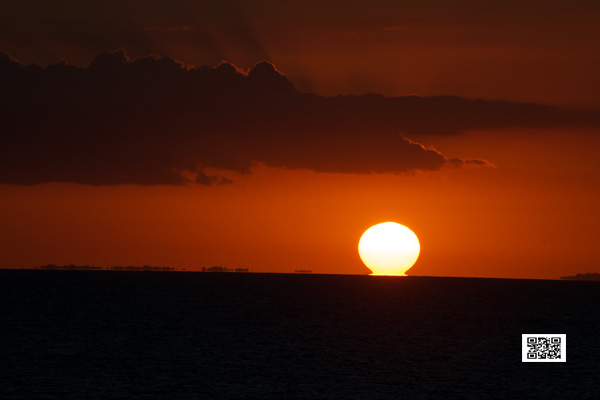
I’m usually always in Africa, doing photography and photographic safaris with photography courses. But sometimes it can happen that something unexpected happens and one gets asked to be at a very different place. That happened when I was asked to present photography courses in New Zealand. It was an unexpected journey that took me out of Africa and it was full of beautiful landscape and magic.
Have a look yourself here.
Ute Sonnenberg for www.rohoyachui.com
On Photo Safari: Safety Travel Tips for Photographers
30/03/13 10:33 Filed in: Photo Safari
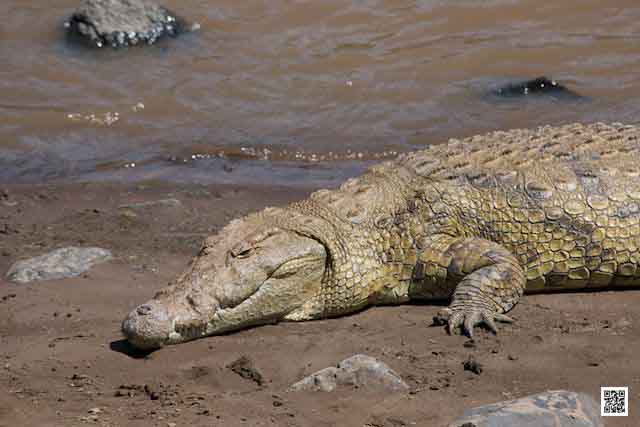
Traveling for photography is the most wonderful thing to do; yet one needs to be conscious of the dangers involved to ensure a great experience and fantastic photos.
This applies to all photography travel no matter where in the world. As a photographer one carries expensive photo equipment and this can attract the interest of the more shady kind of people. So, make sure your equipment is insured in the first place. That gives already a peace of mind. But you want to photograph and not to loose it, so take precautions to be safe during your trip. When traveling in a group do not drop your guard, because you think you are fine as a group. If everyone in the group thinks that drops the guard, everyone will be a soft target for thieves. Yet its understandable that you want to focus on photography not thinking of anything else, so, make clear who in the group is taking care of safety and if you travel alone, find somebody to cover your back.
Another important safety aspect is to make backups of your photos on several external hard drives and just as at home, make sure one backup is off site, which means while traveling keeping them in different places and send one backup home, if possible. Read for more details also Joey L.’s travel tips.
Choose safe accommodation as a “home base” from where you go on your photographic explorations. For example when you want to photograph Andalusia choose a hotel that is safe and in a central location to be able to see all you want during day trips. This has several advantages. You can tell the hotel where you are going and when you think to be back. They will be able to follow up on you, if you are not returning as intended. The hotel will also be able to advice with directions and sights you should see and you avoid carrying around all your things or to pack and unpack every day. I do that anywhere that way, in Spain just as in Nairobi. The locals always know where to go, how to get there and what to do in emergencies. Just choose carefully the accommodation.
The advantage of going on pre-organized photographic safaris is that you are traveling with experienced guides and adequate safari vehicles. Yet be careful with the choice of the safari operator with regards to the vehicle and the quality of the guide. For our photography courses in the bush we always choose operators with qualified guides and 4x4 vehicles and this works very well. They are usually from good camps or lodges that provide also safes in their tents or rooms. They are not the cheapest, but provide higher safety. If you rather travel budget and solo, just be cautious and take in Joey’s tips.
Travel safe and happy snapping!
Ute Sonnenberg for www.rohoyachui.com
The Discovery of Thunder
29/03/13 10:09 Filed in: Photo Safari

This year celebrates the 200th anniversary of Dr. David Livingston’s birthday. He was one of the most remarkable explorers, crossing Africa on foot in 1856 from the Atlantic to the Indian Ocean. He was the one who spotted the Victoria Falls first and there will be celebrations in the Zambian city Livingston throughout the year.
One hears the Victoria Falls first, before one can see them. Their thunder prepares the visitor for what the eye will see, a 2 km wide and 100m tall curtain of falling water, the largest in the world.
The Victoria Falls can be explored in several ways, often embedded in Africa holidays between photographic safaris, from walking the falls to viewing them from a helicopter or small aircraft. They are impressive and a photographic challenge for photographers. An entire photography course could be dedicated to them, learning how to capture their majestic water curtain the right way to let the viewer give the feeling of being there.
The region around the Victoria Falls offers lots of activities from water activities on the Zambezi to bungee jumping and wildlife interactions in the surrounding game reserves.
Maybe this anniversary year is a good reason to visit them.
Ute Sonnenberg for www.rohoyachui.com
How to Learn with Photography in an Innovative Economy
28/03/13 11:37 Filed in: B2B

“The demands of a collaboration-based, talent-hungry, global, wired economy are evolving so quickly that success depends on nothing less than continuous learning. Fall behind and you may find yourself disqualified from the race.
One senior innovation advisor at a major energy company put it this way, “In today’s economy there is no way anybody can be an expert in a substantial part of their total field. The modern ‘renaissance man (or woman)’ is one who understands how to learn.” This is huge and so important.
Companies of all sizes in all industries are trying to meet the new imperative. Learning and Development (L&D) spending was up 12 percent in 2013, the largest jump in almost a decade. The goal is to integrate learning into a company’s culture and processes. There are also training sessions, workshops, conferences, and retreats, but the most successful strategies are those that make learning a continuous process, hardwired into a company’s metabolism.
For leaders this is both a daunting challenge and an exciting opportunity to engage and retain top talent. You have to keep your eye on the horizon, your ear to the ground and your nose in the wind. Your company’s needs are ever-changing, and you must stay one step ahead.” (Meghan M. Biro in The new rules for leadership for Forbes)
How to cope with that? What to do? How to keep learning at a high pace? Not only the learning pace has become challenging also the huge mass of date that needs to be processed is a challenge of its own. Can one do all that through reading, talking, listening? I dare to say no. We learn best through visualizations. When we see “the bigger picture”, we understand, we memorize and we get inspired to develop new things, technologies and products. The high demands of learning in nowadays economy need the matching tools to do so and photography has and will have a key role in this process. Photography makes visible what is non-visible and by doing that, it makes it easy to understand and learn. Leaders need to learn how to communicate with visual tools and not only leaders of marketing teams, who are working already with images for their marketing campaigns, leadership itself will become visual and communicated through images. The learning utilizing photography is an accelerated process. It includes fun, awe, surprise and unconscious learning, which supports and ignites innovation. Photography makes visible what the conscious mind is not able to see yet and allows quantum leaps in learning, understanding and innovating.
And how does it exactly work? First to make clear, no photography skills are needed, no photography course needs to be attended and one does not have to go on trips and photographic safaris to do it, yet this environment does support and accelerate the process. A cell phone camera is enough to start experiencing the strength of photography under the guidance of a qualified trainer, teaching the delegate through assignments to accomplish the desired results.
And now just try it and see yourself.
Ute Sonnenberg for www.rohoyachui.com
Christo: Swimming in Light
27/03/13 08:57 Filed in: Photography & Art
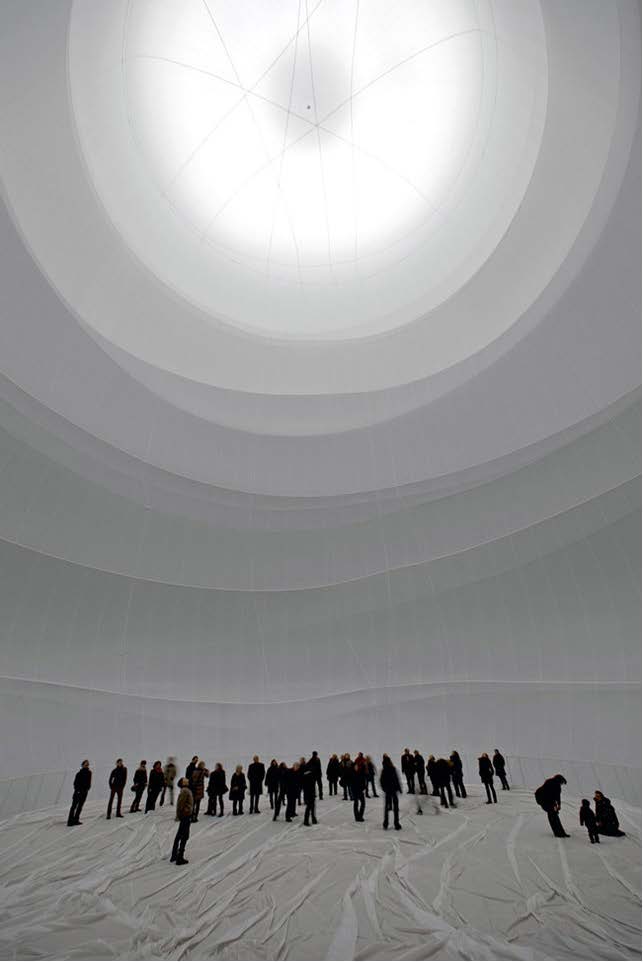
Christo’s art might be controversial, but what he always accomplishes is awe, surprise and a new experience. Many of us know his work only from photographs, but if you are able to visit Germany this year make a stop in Oberhausen, where Christo created as they say there, the largest indoor sculpture ever.
The installation is called Big Air Package with a huge balloon filled with air in a former gas storage silo in Oberhausen. Light shines from the top onto it and Christo self said, he had the feeling to swim in light when he saw it.
So, where is light there is photography. Take on the challenge and capture “light swimming”, get your photography course going there, maybe plan a photographic safari through Europe visiting special art exhibitions or start a photography project around this piece of art and be inspired as photographer for your own work.
Happy light swimming!
Ute Sonnenberg for www.rohoyachui.com
Photo Gear Reviews: Canon, Leica, Fuji and Apps
26/03/13 17:35 Filed in: Photo Tips
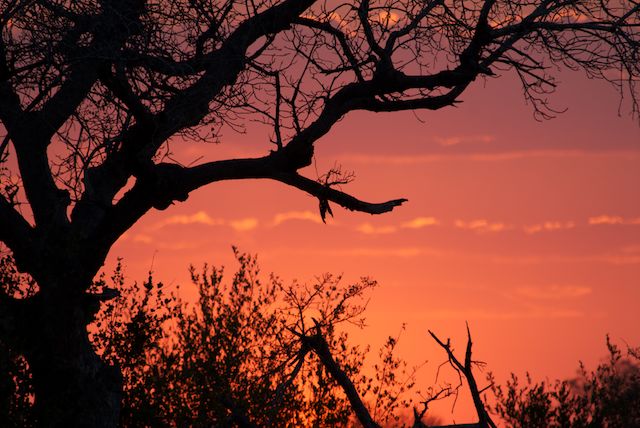
There is news on the photographic equipment market. Canon announced the new entry-level photo camera Rebel T5i and the tiny new Rebel SL1 DSLR. Read a detailed review of the T5i and the 18-55 mm kit lens by PetaPixel here. The Canon Rebel T5i can be a nice entry-level camera suitable for photographic safaris. Maybe a basic one or two hour photography course would do good to learn about the camera features and to get started operating it, to make sure its right from the start fun!
Fujifilm’s XP200 and S8400W are under review by PetaPixel as well. Read the complete reviews here and learn about their ruggedness and zoom. The XP lets you conquer any outdoor adventure and the S8400W is ideal when you shoot usually from a great distance.
For all who are phone-photo-snapping enthusiasts there is the new Digital Native App, that lets you shoot raw images with your iPhone. They claim to be the first to do that and the results look great. Have a look here.
And last but not least there is a comparing sensor review by DxOMark of the Leica M Typ 240 with Sony, Canon and Nikon. The Leica is not doing so well, but Leica lovers say that the sensor is already great for a digital Leica. See yourself here.
Have fun!
Ute Sonnenberg for www.rohoyachui.com
Egene Atget: Nostalgia and Surrealism
25/03/13 15:22 Filed in: Photography & Art

Eugene Atget, French photographer, was born in 1857 and his photography breathes the air of nostalgia, with his images telling the story of Paris at the turn of centuries. He seemed to be a shy man; referring to the photos he took that they would only be simple documents. Nonetheless others noticed their strength and Man Ray, one of the most prominent surrealists of his time purchased several of them and used “During Eclipse” for the cover of La Revolution surrealiste (via Photoblographer). Atget did not want his name on the cover picture. Maybe there was also a bit hesitation with surrealism, but that would be speculation on his thoughts. Yet it’s quite interesting that these nostalgic images are linked to surrealism, when one has in mind e.g. paintings of Dali.
The photography story of Egene Atget is a story like many others of photographers and artists who don’t think too much of their own work and hesitate to be proud of it. One got to start somewhere, with a photography course, a study or just snapping away, nothing is impossible. Just keep practicing and photographing as much as possible and the next cover photo might be one of yours!
Happy snapping!
Ute Sonnenberg for www.rohoyachui.com
ePhoto Book: Roma
24/03/13 14:13 Filed in: Photography & Art
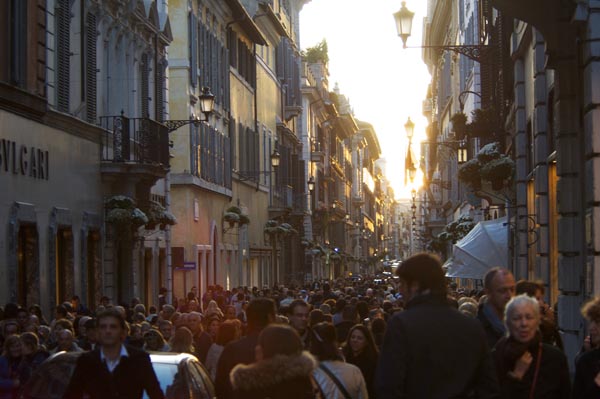
There is a new pope, pope Francis, and he resides in Rome. Well, the photo book was made long before the new pope came, but it just gives a glimpse into the city’s life.
The photos were taken during a photography course in November with the warm Roman winter light, masses of people on the streets and the historical symbols of the city.
Enjoy beautiful Rome.
Ute Sonnenberg for www.rohoyachui.com
On Photo Safari: Animal Behavior
23/03/13 10:44 Filed in: Photo Safari

Photo safaris are of course for the purpose of seeing animals and photographing them, but that can be challenging at times, when the animals just are who they are and the photographer is too late to capture the action. This can be improved by a faster camera, a better trained photographer, yet more important by the photographer having knowledge about animal behavior.
During photographic safaris with photography courses this is an important part of the course. In order to do wildlife photography one needs to know the animals or at least have somebody on the vehicle who does. For example birds. Photographing a bird’s take off is the moment of capturing motion, beauty and dynamic, yet it happens very fast and the photo is often one of an empty branch or an empty piece of sky. This changes when the photographer knows that a bird ducks down for a moment before it takes off, like a skydiver before jumping out of the plane. Then you only need to start shooting the moment the bird ducks down and you will have the take off.
Another example is lion movement. Lion tend to rest during the day and get active when it cools down in the late afternoon. But it can be very tempting to be impatient and not wait when being at a lion sighting and they are all not moving an inch and it becomes very boring. Stay with them when you see that they start grooming and yawning. This is a clear sign that they will get up soon and that is when the action comes and movement happens.
In case this sounds all new don’t worry. There are rangers on the vehicles who know the animals. Learn from them about animal behavior and your wildlife photography will improve and stress to get it right will subside.
Happy snapping and wildlife watching!
Ute Sonnenberg for www.rohoyachui.com
The Paradox of Photographing People's Lives
22/03/13 10:05 Filed in: Photography & Art | Insights & Opinion

Sebastiãno Salgado is an amazing photographer, traveling the world photographing people’s lives in difficult circumstances. His images go deep, show the people’s struggle and the respect he feels for them. Sebastiãno Salgada is only one of a number of photographers capturing the lives of the impoverished and unfortunate with respect and great artistic skills. And we as the viewer and buyer love the images and admire the photographers.
But what makes the photographers choose these subjects and what makes us the viewer to love these images?
We want to feel that we live.
In the western world most of the people have a home, work and some sort of security in their lives. For most of the people there is no daily confrontation with danger and death, the own death, which is how we want to live, what we work for, to be safe. Yet it seems that we need the confrontation with death in order to be conscious that we live. One can do bungee jumping or skydiving, do video gaming or embark on adventures themselves and one can also look at art and photographs like from Salgado. I don’t know if people from a dangerous gang controlled city area or an area with no water and food look at and love photographs that show suffering and death like Salgado’s images. They have it themselves, they experience it every day and they are conscious that they live, because they are confronted with the possibility of their own death every day. Or would they like to see the reflection of their own lives?
The paradox is that the need to feel that we live pays the ones who capture the suffering of others well and makes sure they have a secure life, which creates in return the need within them to go out and photograph again. Another phenomenon is that the further away the suffering and death happen the more the viewer seems to be able to love the photographs and to feel the situation of the people there. It seems to be hard to bear when it comes too close and that is completely understandable. The suffering the photographs show is unbearable and hard to cope with and at the end we all want to survive, physically and emotionally.
So, what does that mean? Will photography awards continue going to photographs that show suffering or will happy photos win as well? Will the world sustain its regions of poverty and suffering or will there be a time that efforts pay off and people have food and shelter?
I don’t know, we humans are funny creatures with a very complicated psychological constitution. Maybe it is part of the process of becoming human.
Do we need to feel guilty that we love these photographs? No. We seem to have a very good sense of when a photograph was taken with respect and compassion and the photos keep us aware that there is still a lot to be done in the world.
And how do photo safaris fit in here? Not? What do we experience on a photographic safari that is so addictive? Nature? This is probably something for another post.
Keep enjoying the spirit of photography and its deeper insights.
Ute Sonnenberg for www.rohoyachui.com
image above by Sebastiano Salgado
How to Accelerate Innovative Leadership with Photography
21/03/13 10:15 Filed in: B2B
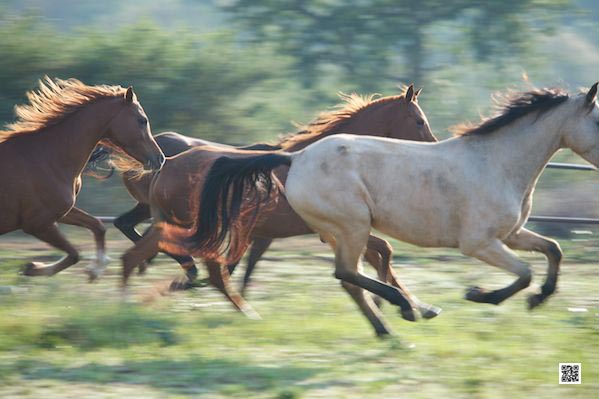
Something is innovative when it is qualitatively new and in order to be an innovative leader, executing innovative leadership an innovative leadership tool is what is needed.
Times are fast, news spreads within seconds all over the world and high quality decisions need to be made quickly, having global impact on the company’s success and the life of people. The high quality demand in combination with time is tricky and asks for a tool that can manage both with the result of innovative decisions. The tool needs to serve innovative leaders and accelerate innovative leadership. This tool is photography.
Photography is easy, quick, reliable, insightful and last but not least also fun. And when there is fun, work and learning just goes easier. Instead of a long and tiring process photography makes it possible to get to the point quickly, unearths insights instantaneously and is incredibly easy to handle. It is applicable to all issues, processes, projects and leadership challenges, team buildings, HR tasks and in house training and coaching. The utilization of photography accelerates problem solving, strategic planning, product development and any other task a company is dealing with every day.
Use it, accelerate innovation and bring some fun into daily work. Well it is not quite a photographic safari experience, but there are pretty sure some Big 5 just around the corner of the office. It is about seeing, innovation is about seeing like Steve Jobs did and photography makes one see.
Happy accelerated seeing with photography!
Ute Sonnenberg for www.rohoyachui.com
Street Photography: Inspiration
20/03/13 08:47 Filed in: Photography & Art

As a response to an earlier post about Bill Brandt’s street photography, Steve Kenny and Jeanette DeMain provided some more inspirational street photographers to be worth looking at and they really are.
There is Jacob Riis, a Danish American who lived from 1849 to 1914. He is also called a social documentary photographer, trying to help the impoverished in New York City with his photographic and journalistic talent. So, he might be best characterized as a social reformer with a camera as his tool. His focus might not have been on composition and light in the artistic way, yet he saw a different light, the light in people and he wanted the light of these hidden away impoverished people and their life situation to be visible for all.
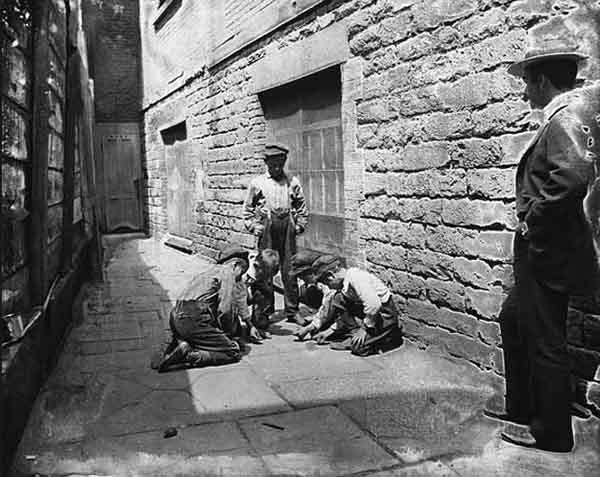
Swiss born and after World War II to the US emigrated photographer Robert Frank is another inspirational photographer, capturing the spirit of America in his book The Americans. He saw American life as overemphasized on money and America often as a bleak and lonely place (Wikipedia). While trying to capture the soul of America as he experienced it, he wielded a great artistic eye, reflecting in the composition of his photographs.

And then Dennis Hopper, an artistic multi talent. His snapping away is not only capturing famous people he was socializing and working with, his photographs also capture the spirit of time whenever he saw it. It might be even harder to acknowledge the photographic talent of Dennis Hopper when on most of his photographs are celebrities and one thinks its already a good photo because of that, yet they are also well composed and just taken at the right moment.
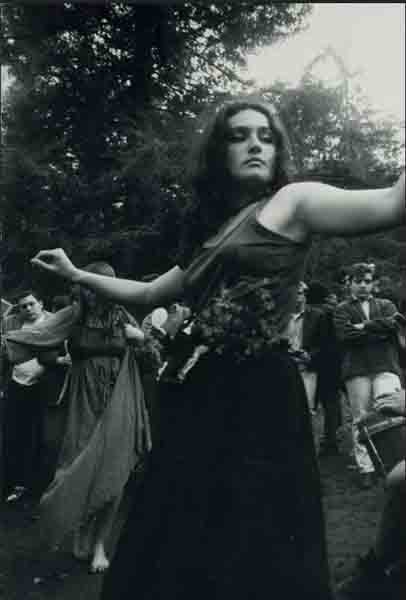
Between all these men finally a woman, Vivian Maier. Maier was a amateur street photographer who worked as a nanny in Chicago for 40 years. Her photographs remained unknown until they were discovered by John Maloof, a historian and collector only two years before she died. He said about Vivian Maier, “She was a Socialist, a Feminist, a movie critic, and a tell-it-like-it-is type of person. She learned English by going to theaters, which she loved. She wore a men's jacket, men's shoes and a large hat most of the time. She was constantly taking pictures, which she didn't show anyone.” Now look at her photos and see how great they are.

All these examples of great photographers, their journeys and their art can be of great inspiration to all of us. They show that art happens just in front of us, on our doorsteps, in our daily lives, we only need to start seeing it. And they show also that street photography is an important part of history, telling the story of time and people and sometimes they change the lives for some people too.
So, as mentioned in the earlier post, go out and snap away, make street photography part of your photography courses, go on photographic safari in your home town and find new Big 5 everyday!
Thank you Steve and Jeanette for the inspiration.
Keep enjoying photography!
Ute Sonnenberg for www.rohoyachui.com
Intuition Training Explained
19/03/13 08:36 Filed in: Intuition | Insights & Opinion

Intuition is not something we need to train for to have it; it is something that is always there, we only need to train ourselves to identify it and to utilize it.
Intuition is also often called gut feeling and without thinking about it we are using it or at least talking about it every day. How often do we have a gut feeling about something to happen and how often are we saying to our friends and colleagues “I knew this would happen”? Pretty much every day, about something or somebody in our personal life or work life.
Many leaders in corporate, or how we call them nowadays thought leaders, base their decisions on intuition. They might not call it like that for the outside world, but for themselves they know they do. That does not mean that they do not look at the numbers and it does not mean that they do not think businesswise, but their intuition lets them look at the right numbers, lets them point out numbers that are not quite right, although they look good. Their intuition lets them ask the right questions, lets them dig deeper where others don’t, their intuition helps them to make the right investments and alerts them when they should step out.
Many of them got to success and successful use of their intuition by falling and standing up, learning by making mistakes and by making right decisions to understand how their intuition talks to them. But even those who are already conscious of the value of their intuition, are mostly not using its full potential and those who are not yet aware of the benefits of their intuition are missing out great opportunities of success.
For the full use of ones intuition and to tap into its enormous resources, one can be trained. The training enables in essence the trainee to see and hear clearly what information is offered by his/her intuition and how to utilize it in daily life and work. And because intuition is something non-physical and non-visible, it helps a lot to make it physical and visible in order to see and hear what it’s trying to provide.
It is easier than it sounds to make something non-physical and non-visible, physical and visible, one only needs a camera. It is that strength of photography together with its easy access and easy handling what makes it the appropriate tool to train intuition. Add an accelerating and supporting environment to that and an intuition training of only 4 days is ready to jump start the beneficial use of intuition for personal and business purposes.
The intuition training enables business leaders of all trades to communicate on intuition level, turns team buildings into new qualities and achieves all that within the relaxed atmosphere of a photographic safari with a photography course, yet the photography course is a bit different.
The technical photography skills of the delegates are not of importance, the camera only needs to be digital. The daily routine is the routine of a photographic safari with a game drive in the morning and a game drive in the afternoon and the delegates will snap away like on a holiday, yet there is a big difference. For every game drive an assignment will be given to the attendees, an assignment only the unconscious is able to accomplish. This makes it easy for the conscious mind, because it can thoroughly enjoy the landscape and animals while the unconscious does the work. To see what the unconscious has worked out, the images will be uploaded back at the lodge and explored according to the assignment. Each assignment has the character of a learning cycle and guides the delegates step by step in identifying the language of their intuition and the information their intuition is providing. The learning cycles of each assignment are part of the bigger learning cycle, the 4 days event itself, starting with departure in Nairobi and ending with arrival in Nairobi on the last day. Within this greater learning cycle the delegates are taken into a different hemisphere, the intuition level and the northern hemisphere where the smaller learning cycles of the game drive assignments take place.
As a result of the intuition training the delegates are able to communicate without words, thoroughly on intuition level, or energy level, and to benefit from the information the intuition level provides to suit their needs in personal life and business. Success becomes sustainable, fueled by the endless resources of the intuition level, also called the endless resources of the unconscious level or energy level as it is called in quantum physics.
Photography is the innovative tool to easy access these resources for beneficial use. It makes photography the most potential tool of the future and the intuition level the never-ending resource of information and knowing to achieve aspired goals.
We all got access to these resources, lets use them.
Ute Sonnenberg for www.rohoyachui.com
Alfred Wertheimer: Photographing Nina Simon
18/03/13 15:06 Filed in: Photography & Art

Photographer Alfred Wertheimer was hired by Anne Fulchino, the person who hired him already for the famous photo series of young Elvis Presley, in the mid 60ies to photograph Nina Simon, the beautiful and uncompromising singer from North Carolina.
By photographing Nina Simon, Wertheimer employed his famously characterized “available darkness” instead of “available light” approach to photography, a way to approach and create contrast in an image. It is probably an interesting way to capture the soul of the subject in this case Nina Simon and a variation of what one learns in photography courses, yet its part of the same, the relation of light and darkness.
Nina Simon would turn 80 this year. Unfortunately she passed away already in 2003 in the south of France, but her songs are just as great as in the 60ies and the photographs tell a story of a special woman.
Often a photographer’s life and work story gets connected with other artist’s lives and work, like Wertheimer with Elvis Presley and Nina Simon and the Annie Leibovitz with the Rolling Stones.
One never knows for what purpose one is called to photograph somebody. The person might be the next superstar
Happy snapping.
Ute Sonnenberg for www.rohoyachui.com
ePhoto Book: Middle-Earth
17/03/13 12:23 Filed in: Photography & Art

“Middle-Earth is a far away place where elves look after those who embark on journeys and where nature caresses the courageous.”
The images were taken during a series of photography courses in New Zealand, which might have felt like an unexpected journey with hobbits about to emerge any minute.
Travel to Middle-Earth and embark on a journey. View the book here.
Ute Sonnenberg for www.rohoyachui.com
On Photo Safari: Meet the Lion
16/03/13 14:40 Filed in: Photo Safari

On photo safaris probably the most popular events are the stops in the bush for coffee and sundowners. Being right there in the middle of the animals, overlooking beautiful landscape and enjoying a nice cup of coffee or thee. Usually we discuss photographic topics as we are on a photography course, play a bit with the cameras or just chat about anything. Its really nice.
On very rare occasions these stops include animal encounters, bigger animal encounters. The photo above was taken by my student Michelle de Souza when she was safely back in the vehicle and the lioness had made her way to inspect the things on the table. There was no moment that the people were in danger. The lioness was seen in time and all could get back into the safe landrover. Something like that is really very rare and it ended with the lioness walking away with the cookie box.
Happy snapping!
Ute Sonnenberg for www.rohoyachui.com
When Business Leaders Use Photography
15/03/13 12:28 Filed in: B2B

When business leaders use photography the first that comes to mind might be images of top managers on photo safari wildlife photography courses with big telephoto lenses enjoying their hobby during a holiday in Africa.
But there is more. Innovative business leaders use photography as tool in their daily work. No big zoom lens and heavy camera needed, the cell phone is enough or a nice little pocket camera. The photographs are the helping tool with problem solving, strategic planning, team buildings, leadership training, business coaching and endlessly more.
But how does it work? Pretty simple. Whatever question or task the leader/manager is confronted with and struggling to get hold of its essence and the innovative solution, photography comes in to help seeing. The problem or task gets visualized through photographs and the photographer/leader/manager does not even have to leave the office. Photographing with the right mindset will deliver all answers and unearth hidden from plain view solutions. Now they only need to use the information provided and implement solutions and results.
Sounds too easy? It is easy, yet a training is needed to use this amazing tool photography in that way. And from there you just go.
Imagine how easy things get in the office!
Happy snapping!
Ute Sonnenberg for www.rohoyachui.com
Innovative Brainstorming with Photography
14/03/13 12:34 Filed in: B2B
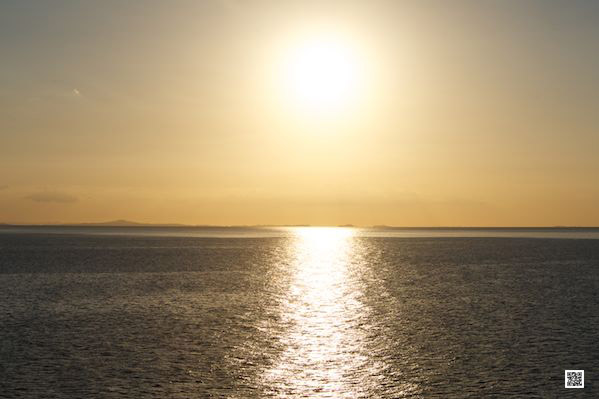
Brainstorming is often the way we try to find ideas regarding a certain project, a new product or for problem solving. We use it in business, in personal life and for creative processes. And we usually talk a lot while brainstorming, using several techniques to tap into our creativity to come up with innovative ideas. Also images are involved, but the semantic plays a major role.
How about using only images to brainstorm? A team is brainstorming about lets say a business issue and using entirely photography to unearth problem solving ideas and concepts. Each member of the team visualizes an idea through photography and shows the image to the colleagues. All team members look at all images, “digest” what they see and take the ideas further; visualizing what potential they see in them. At the end of the brainstorming session the essence of all ideas is left on the screen in form of one or more images for further use to solve the business issue.
These sessions are very efficient and allow leaders to guide their teams to innovation in an intuitive way. They work also for issues within teams and can be used in team buildings e.g. in combination with photographic safari excursions for one or more days. The environment will contribute to the success. But in essence they work anywhere, in meeting rooms in offices, on planes, at conferences and anywhere else.
Try it and by the way they are fun too.
Ute Sonnenberg for www.rohoyachui.com
Philippe Petit: When Art Looks Effortless
13/03/13 12:38 Filed in: Photography & Art
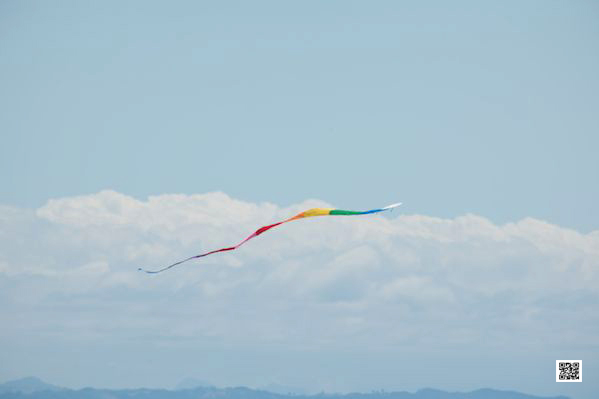
Philippe Petit is the high-wire-walker, famous for walking across the void between the two towers of the World Trade Center in New York in 1974.
“I knew as a wire walker, I would be a poet who writes in the sky. Art happens when you work millions of hours not to make it look hard but to make it look effortless. The beauty for an audience is to be inspired and awestruck because you made them forget that the wire was even there.” Philippe Petit
To make the audience forget that there is a wire, he works incredibly hard before the actual performance, but nobody can see that it is even work what he is doing.
Many great artists create a similar experience like for example the great ballet dancer Nureyev or in music e.g. Sting. Their performances seem effortless.
That can lead to the wrong conclusion that they don’t work and shouldn’t earn money and definitely not those huge amounts, because it doesn’t look like hard work. The same principle applies to any craftsmanship or work that is wonderfully done, from the gardener to the business leader and the painter and the housewife. Behind the appearance of effortlessness hides the most difficult and hard work, making it look effortless itself is hard work.
What does that mean for photography and photographers? One can often hear opinions that photography is no hard work, because it’s only a click on the shutter. When wildlife photography is presented its quality is often explained with the time the photographer had to spend to get the image and the difficulties he/she experienced in the bush. Other photographic artwork gets explained and valued with the hours the photographer had spend behind the computer to make it look like that and the more hours the more worth. But somehow nobody ever says about a photograph that it is great art, because it looks effortless. Is it, because there is controversy about what is art in photography or because people think that the other photographer only got lucky?
I don’t know, but I do know that every artist goes through a creative process with ups and downs and struggle and hassles, a painter, a musician and a photographer. And one can see the difference in the photographs, the story of the photographer is in them and photography itself is the effortless medium to visualize the efforts of the artist.
A creative journey in short is a photographic safari or a wildlife photography course. It’s the photographer and his/her camera that embark on the adventure and the pictures tell their story. The quality of the photos of the first day is different from the photos of the final day, yet they were taking with only a click on the shutter.
Keep working on effortless looking photography. It is not easy to get there, but when you make it, the results are mind-blowing.
Happy snapping!
Ute Sonnenberg for www.rohoyachui.com
Nikon's Awesome New Photo Gear
12/03/13 09:54 Filed in: Technology & Gadgets | Photography & Art

The wildlife photographers who use Nikon camera gear are most likely the ones who had been waiting for years that Nikon comes with a new 80-400 mm f/4.5-5.6 telephoto lens. This lens is very practical on photographic safaris and continuously used during wildlife photography courses all over Africa. It gives the wildlife photographer lots of freedom and flexibility. Ad now the waiting is over! Nikon launched the new lens with absolutely great specs:
Another great new thing to come is the D7100, a very good camera for a reasonable price. Have a look at the specs:
The D7100 is available at B&H for USD 1,196.95. Expected arrival of the camera in the shop is the 14th of March, pre-orders are taken.
So, now only sun, free time to go on photographic adventures and the fun can begin.
Happy snapping! Have fun!
Ute Sonnenberg for www.rohoyachui.com
Annie Leibovitz: Reflection
11/03/13 09:03 Filed in: Photography & Art

Sometimes a photographer needs moments of contemplation to reflect on the work she/he is doing, the photography she/he is doing and how happy one is with what one does. In this video a young Annie Leibovitz is reflecting on her portrait work, how she feels about it and how she experienced photographing John Lennon on the day he was killed. She expresses the wish to have time to be out, only she and her camera for two or three weeks, just to photograph what she wants, sees and loves.
Isn’t this exactly the dilemma when the photography business goes well for a photographer that suddenly there is no time anymore to just enjoy photography in its pure and essential way, just the photographer and the camera and no clutter around? This might be the moment that photography becomes again a hobby for the photographer, as funny as it might sound. And the photography guide starts craving a photographic safari just for him/herself and a photography teacher wishes to attend a photography course just for him/herself.
It is probably the danger when making your hobby and passion your work that you might lose the passion and love for what you are doing. I don’t know how Annie Leibovitz feels about this today, yet its great to hear how she felt about it at a younger age.
Keep having fun and joy when snapping away! Keep listening to your heart.
Ute Sonnenberg for www.rohoyachui.com
ePhoto Book: Sensation
10/03/13 10:56 Filed in: Photography & Art
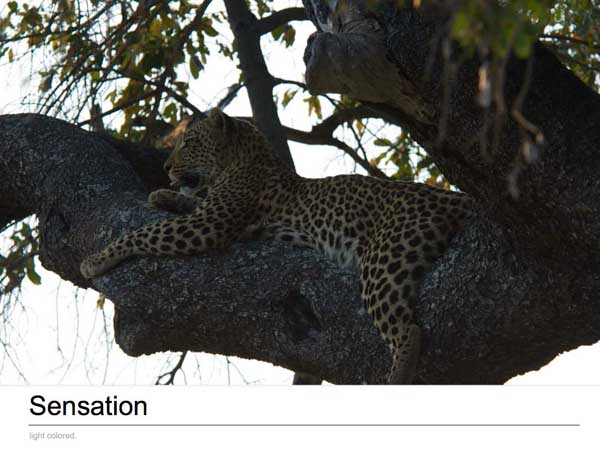
The Okavango Delta in Botswana is one of the most beautiful destinations for photographic safaris. The light is just sensational and even with an entry level photography equipment one can take the most amazing pictures.
Images from photo safaris to the Okavango Delta can always be identified easily, the light is different from any other place and photographers heaven.
The images of this book were not taken during a photography course, just when traveling for photo fun to the delta.
Click for the ephoto book here.
Enjoy!
Ute Sonnenberg for www.rohoyachui.com
On Photo Safari: The Speed of Memory Cards
09/03/13 10:54 Filed in: Photo Safari

When new cameras are announced, the speed in frames per second is one of the very interesting features. We want a camera to be fast to capture animals in motion. Nothing is more frustrating on a photographic safari than pressing the shutter and nothing happens. Sometimes the missing focus is the reason, but often it is the speed. And very often it is not even the camera that slows down the process; it’s the memory card. You can have a fast camera, but it will not be able to use its entire abilities when the memory card is to slow in processing the images. Then you see the message “buffering” and the lion kill is just happening in front of you.
Be conscious about that when purchasing memory cards. Always ask what card suits best the abilities of the camera. When you are attending photography courses make it a topic to understand better what memory card to use when and for which camera. It will make you a happier photographer, shooting away at great sightings in the bush and elsewhere.
Happy snapping!
Ute Sonnenberg for www.rohoyachui.com
Bill Brandt: Pioneer of Street Photography
08/03/13 09:24 Filed in: Photography & Art

In the age of cell phone cameras probably all smart phone users are street photographers, snapping around wherever they are, collecting an amazing body of work about our society.
In the early 30s of the last century when street photography was not known, the British Photographer Bill Brandt started documenting British life with his photography. Not only the subjects of his photography have a great value, also his eye for light and composition is amazing.
Maybe there should be an art-street-photography part in every photography course and should the students go out on photographic safaris through their town or village to capture daily life in a stunning way.
Be inspired and enjoy snapping arty street photos!
Ute Sonnenberg for www.rohoyachui.com
How Photography Inspires
07/03/13 14:44 Filed in: Photography & Art | B2B
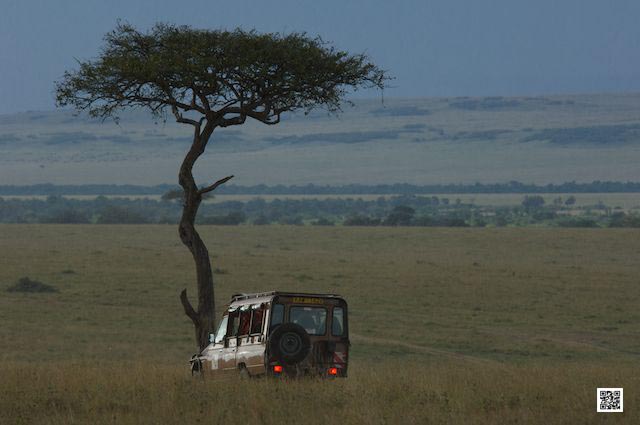
Photography has become a part of our daily life, to capture snap shots of the children and pets, to communicate, archive, explain and inspire.
It inspires not only our private life, but also our work life and it will do even more in the future. Leaders will visualize the future of their company, finding solutions by utilizing photography; teams will become more aligned by joining team buildings with photography; communication will be visual and misunderstandings will be minimized and even success will be visualized with the help of photography.
But there is more. Photography is and will be not only our everyday tool, it also inspires us to learn, grow and invent. It is at the root of innovation and images carry innovative ideas. Photography is fun and adventure and photographic safaris might be the only shooting left in the bush and conservation blooming. It is technology curiosity with constantly new evolving photographic gear and photography courses igniting art and joy.
Photography is inspiration. Let it inspire you!
Ute Sonnenberg for www.rohoyachui.com
Ansel Adams: On Photo Safari in America
06/03/13 14:43 Filed in: Photography & Art

Who wants to walk in Yosemite? Who wants to go on a photographic safari through America? Who wants to attend a photography course presented by a great master of photography?
If your answer is yes, me, then you should visit the Ansel Adams exhibition in London. The show is on until April 28th in the Maritime Museum in London. And if the journey to London would be a bit too far, there is a catalog available online to enjoy his great work.
Learning form old masters is not only beneficial for painters; it is also a wonderful source of inspiration for photographers.
Be inspired and enjoy learning!
Ute Sonnenberg for www.rohoyachui.com
Conservation, Photography and Fashion
05/03/13 09:10 Filed in: Photography & Art
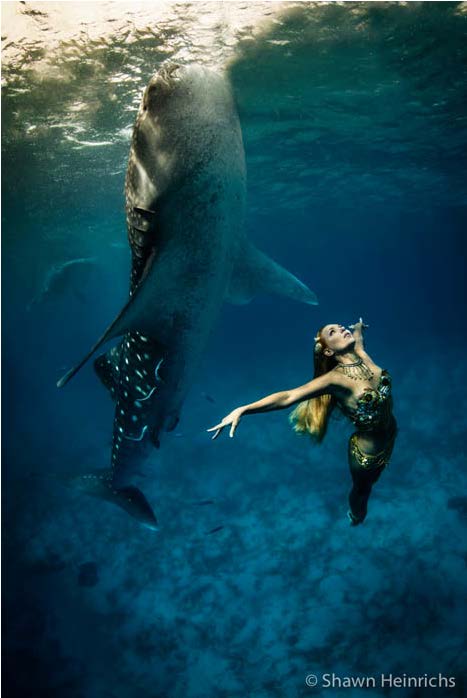
Photographic safaris are helping not only to create jobs and to bring income to communities in Africa; they also play an important role for conservation. Where people go on safari to photograph wildlife, the animals are safe and all is done to protect the wildlife and their environment. The increasing number of guests who do photographic safaris and follow wildlife photography courses helps to ban hunt in precious areas and to increase for example the number of lion in the wild. Ecotourism and photography work well together. They are the future for the wildlife areas, they help to protect and create a nature minding conscious in the communities and in the first world countries. The photo camera replaces the rifle and wildlife is preserved.
Fashion is not that often mentioned as a major contributor to conservation, but there are great examples like the fashion shoot of Shawn Heinrichs and Kristian Schmidt with the intention to help protecting the whale sharks. Whale sharks are endangered, but most people don’t know. These incredible and peaceful animals were posing together with models for a mesmerizing fashion shoot of the most beautiful kind. The community in the Philippines where the photographs were taken has developed a small whale shark tourism. Hopefully they will both have a bright future, the whale sharks protected and safe and the community with a stable income and safe as well.
Read more about the fashion shoot in the original post from PetaPixel.
Ute Sonnenberg for www.rohoyachui.com
Gregory Heisler: Master of Portrait Photography
04/03/13 13:57 Filed in: Photography & Art

Gregory Heisler’s portraits were TIME Magazine covers, show world leaders and in many ways impressing people. What is it that makes his portrait photography different and mesmerizing?
When you visit his website you will see that he categorized the portraits like quiet, vibrant and dynamic. Each word an attempt to reflect the essence of the photograph, the essence of the person photographed.
Great portrait photography captures not only a picture of a person, it captures a personality in all its dimensions. And Gregory Heisler is doing that very well. Look at his images and try to feel how he connects with the person he photographs. Then apply it to your own photography, maybe bring it up in a photography course and practice especially the connecting and personality reading part of portrait photography. You will learn to work consciously with your intuition, creating amazing portraits.
Happy snapping!
Ute Sonnenberg for www.rohoyachui.com
ePhoto Book: Lamu
03/03/13 11:21 Filed in: Photography & Art

The island of Lamu is located just off the north-eastern coast of Kenya. It is the oldest Swahili settlement of the country and with its Arab architecture it is a wonder-world for photographers.
This photo book lets you travel to Lamu and takes you on a photographic “safari” through the streets of this World Heritage Site, a very special place for photography courses, lovers of colorful cultures and travelers to the tropical regions of the world.
Enjoy Lamu. View the book here.
Ute Sonnenberg for www.rohoyachui.com
On Photo Safari: Moving Objects
02/03/13 11:20 Filed in: Photo Safari

On photo safari probably the most exciting part is to photograph moving objects, like a leopard jumping in a tree or lion cubs playing in the sun. As long as the lion cubs are playing in the sun everything is nice and easy. The light is great and the images will look lovely.
But as soon as the leopard moves around in the tree and with every step he makes the light changes, it becomes a photographer’s challenge. A leopard moves fast and light changes fast too. That means fast changing settings back and forward, keeping the focus point constantly on the leopard where you want it to be, checking ISO and exposure, not forgetting what you all changed now that he walks into bright light and so on. It is exhausting and wildlife photography course attendees all agree that this is a very challenging task.
But photographing moving objects is also great fun and it often results in stunning arty images, like half blurred horses in the last light of the day or a herd of buffalo like an abstract painting in the first light of the day. Movement is great and often lives its own life in our photographs, surprising us with its mind blowing results and let forget the trouble we went through to get them.
Inspired? Enjoy the fun!
Ute Sonnenberg for www.rohoyachui.com
How Photogrpahy fixes Things
01/03/13 09:39 Filed in: B2B | Insights & Opinion

Sometimes we enter a room full with people and we feel that there is somehow an undercurrent, something is going on, although everybody seems to enjoy him(her)selve and having fun. This situation occurs also in meetings and work teams, but it is not clear what it is. Something is not right, but one cannot say what it is.
One-on-one conversations are planned to find out what is going on, but they don’t unearth the real reason of the disturbance in the team. The undercurrent develops to be a surface current and irritations pile up. Still words cannot fix it, there is something nobody is talking about or nobody is conscious that it is there. The situation has become very unpleasant. The team can hardly function.
What now? Photography can fix it. What the mind is not able to tell, the unconscious is more than capable to show, because it knows where the problem is and how it can be fixed. Photography becomes the voice of the unconscious. It helps teams to find out what they are struggling with, helps leaders to find the right way in guiding their teams and it is at the end also fun and makes it a very pleasant experience. Team buildings with photography and leadership training with photography are only two ways in helping teams through photography. There are many more.
And what works for work teams works also at home for families, friend groups, dance groups, football teams and wherever people would like to fix unpleasant situations.
Try it. It feels so good when its solved.
Ute Sonnenberg for www.rohoyachui.com
